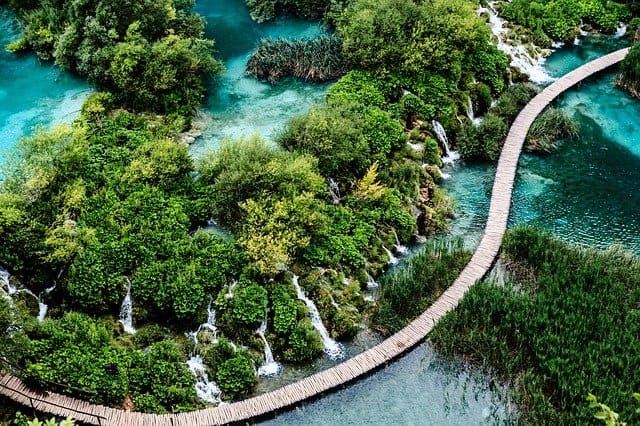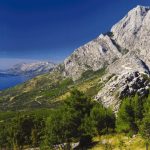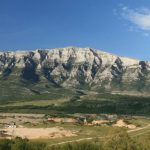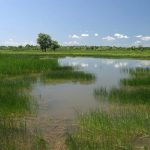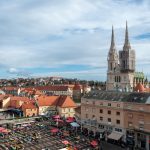A UNESCO World Heritage Site since 1979, all you need to know about Plitvice Lakes, one of Croatia’s top attractions. Tickets, sights, accommodation & tips.
- Plitvice Lakes: an introduction
- A World Heritage Site: What does UNESCO say?
- How to get to Plitvice Lakes
- 4 seasons, 4 experiences: when is the best time to visit?
- Opening times and ticket prices
- Plitvice Lakes: things to see
- Accommodation near Plitvice Lakes
- Tourism and the environment: pressure points
- Useful contacts
Plitvice Lakes: an introduction
Dubrovnik may be the best-known city in Croatia, but in terms of famous places, Plitvice Lakes are not far behind. Indeed, Plitvice Lakes National Park is Croatia’s best known and most visited National Park.
The lakes are simply GORGEOUS. It doesn’t matter what time of year you go, this is nature as you rarely see it. In fact, the awesome power of its falling waterfalls etched itself on the mind of one Nikola Tesla, who lived not far away. Later, he would harness this power on the American/Canadian border. Specifically, he used Niagara Falls to transmit electrical power to Buffalo in New York.
With more than a million visitors a year, care needs to be taken to protect Plitvice from over-tourism. Efforts are made to ensure this happens. And quite rightly so.
In the video below, look at how life was back in 1939 before mass tourism reached the lakes.
A World Heritage Site: What does UNESCO say?
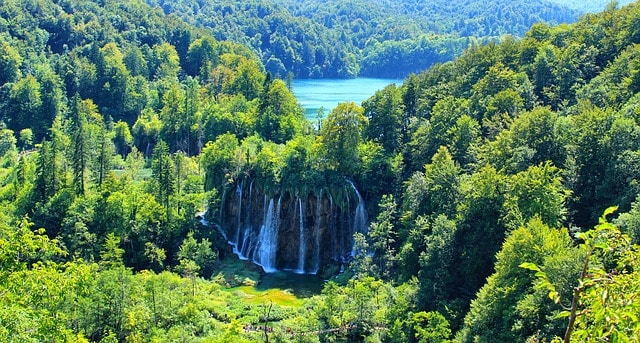
The lakes were named as a UNESCO World Heritage Site back in 1979 (check out the Total Croatia UNESCO guide) – here is what the international body had to say:
The waters flowing over the limestone and chalk have, over thousands of years, deposited travertine barriers, creating natural dams which in turn have created a series of beautiful lakes, caves, and waterfalls. These geological processes continue today. The forests in the park are home to bears, wolves and many rare bird species.
How to get to Plitvice Lakes
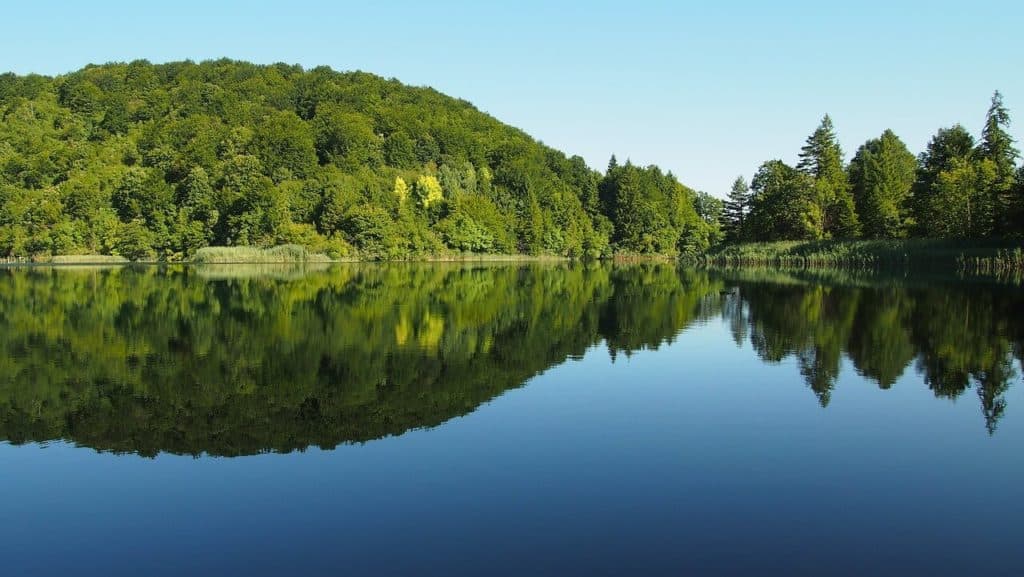
Despite not being close to any other main tourist centre, Plitvice Lakes remain wildly popular. They are located on the old road from Split to Zagreb, roughly halfway between Croatia’s two biggest cities. Moreover, many tourists opt to visit the lakes when travelling between them. Travel time is roughly 2.5 hours from each city.
Looking for a fast, reliable and trouble-free transfer to or from Plitvice Lakes? Contact TC transfer partner Adriatic Transfers for your one-stop solution.
Most backpackers arrive by two methods – bus or organised tour. Indeed, there are many buses between Zagreb and Split, which is the most common route.
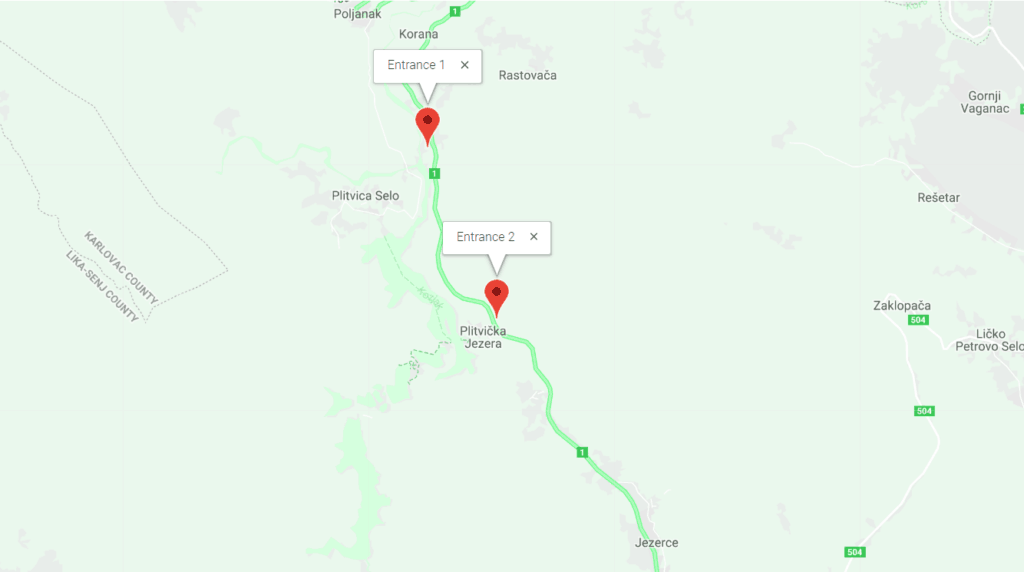
4 seasons, 4 experiences: when is the best time to visit Plitvice Lakes?
Unlike most tourist attractions, Plitvice offers a totally different experience, depending on when you visit. Of course, most of the 1 million-plus tourists come in the summer months. But, if you come at another time of year, your Plitvice impressions will be altogether different.
Check out the incredible video below, filmed after heavy snowfall. Also, look at this natural wonder during the other seasons of the year.
When is the best time to visit? Why not come four times, once in each season? As a result, you’ll leave with four distinct, magical, and unforgettable memories.
Opening times and ticket prices
The Plitvice Lakes National Park is open 365 days a year, which is great news for tourists visiting. Opening times vary according to the season, and they are divided according to Spring, Summer, Autumn, and Winter. In peak summer months, the national park is open from 07:00 until 20:00. In comparison, winter opening times are obviously much shorter. Check out the latest official opening times.
Prices vary very much according to the season. In fact, winter prices can be more than 75% cheaper than the peak season. There are various discounts for students, kids, and groups, while children under 7 go free. For the latest prices, check the official website.
You can buy tickets at both entrances to the lakes. Credit cards are accepted.
Plitvice Lakes: things to see

Be prepared for natural beauty at its very best!
Getting the most out of the lakes will obviously depend on how much time you have. The official website has prepared some useful options for those looking to wander around. Also, there are also a number of hiking trails where you can well and truly escape the crowds.
While cycling is not permitted within the park itself, it is a popular activity in the surrounding area. Why not combine a little cycling with nature? Afterwards, park the bike and enjoy the beautiful nature.
Human habitation at Plitvice dates back to pre-historic times. And, humans have left plenty of traces of its time in the region. There are many cultural treasures worthy of exploring.
Accommodation near Plitvice Lakes

While most people pop in for a day trip, an increasing number of tourists are looking to linger. Accommodation options are developing fast. Booking.com and Airbnb are your usual friends. Want to stay in the thick of nature? There are camping and glamping options too. And there are various hotel options.
The pictured glamping option with luxury tree houses opened in 2018.
Tourism and the environment: pressure points
While the stories about Plitvice are broadly positive, the sheer numbers of tourists obviously affect the environment.
So much so, in fact, that UNESCO has been taking a greater look in recent times. There was even some discussion that its status as a World Heritage Site was under threat. While this danger has subsided, it has not completely gone away. Learn more about the issues.
Useful contacts
To learn more about Plitvice Lakes, check out the official website.
To follow the latest news from this wondrous natural treasure, follow the dedicated TCN page.

